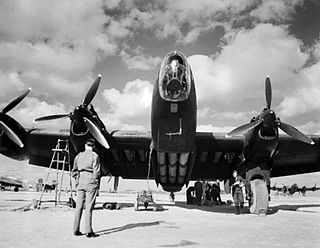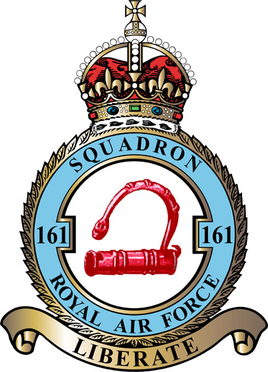No. 155 Squadron RAF is a former Royal Air Force squadron.

No. 220 Squadron of the Royal Air Force (RAF) was founded in 1918 and disbanded in 1963 after four separate periods of service. The squadron saw service in both the First and Second World Wars, as a maritime patrol unit, and finally as part of Britain's strategic nuclear deterrent.
No. 213 Squadron was a squadron of the Royal Air Force. The squadron was formed on 1 April 1918 from No. 13 (Naval) Squadron of the Royal Naval Air Service. This RNAS squadron was itself formed on 15 January 1918 from the Seaplane Defence Flight which, since its creation in June 1917, had had the task of defending the seaplanes which flew out of Dunkirk.

No. 148 Squadron of the Royal Air Force has been part of the RAF since the First World War.

No. 200 Squadron of the Royal Air Force operated during the First and Second World War. The squadron was first formed in mid-1917 and during the First World War, it undertook a training role, before being disbanded in mid-1919. It was re-formed in 1941, and operated maritime patrol aircraft firstly from the United Kingdom, and then west Africa until early 1944 when it moved to India. In April 1945, the squadron was disbanded, having been renumbered No. 8 Squadron RAF.

No. 161 Squadron was a highly secretive unit of the Royal Air Force, performing missions as part of the Royal Air Force Special Duties Service. It was tasked with missions of the Special Operations Executive (SOE) and the Secret Intelligence Service (SIS) during the Second World War. Their primary role was to drop and collect secret agents and equipment into and from Nazi-occupied Europe. The squadron had a secondary role in acting as the King's Flight.

No. 26 Squadron of the Royal Air Force was formed in 1915 and was disbanded for the last time in 1976.
No. 52 Squadron was a Royal Air Force squadron that saw service in both World War I and World War II.

No. 266 (Rhodesia) Squadron RAF was a squadron of the Royal Air Force.

The designation No. 69 Squadron has been used by the Royal Air Force for two quite different units.
No. 242 Squadron RAF was a Royal Air Force (RAF) squadron. It flew in many roles during the First World War, Second World War and Cold War.

No. 251 Squadron was a Royal Air Force Squadron which operated during the First World War and the Second World War. The Squadron was disbanded in 1945 and remains inactive.
No. 225 Squadron RAF is a former Royal Air Force squadron.
No. 59 Squadron was a squadron of the Royal Air Force, based in Norfolk, England.
No. 116 Squadron RAF was a Royal Air Force squadron first formed as part of the Royal Flying Corps during the First World War. Reformed as part of the RAF during the Second World War it served as an anti-aircraft calibration unit and also operated post-war from 1952 until 1958.

No. 87 Squadron RAF was an aircraft squadron of the Royal Air Force during the First World War and Second World War.
No. 285 Squadron RAF was a non-operational Second World War Royal Air Force squadron that operated a variety of aircraft to provide targets for anti-aircraft gun practice initially in the North Midlands and North Wales area.
No. 229 Squadron RAF was a squadron of the Royal Air Force, and is an officially accredited Battle of Britain Squadron. It became No. 603 Squadron RAF in January 1945.
No. 232 Squadron of the Royal Air Force was active in both the First and Second World Wars in a variety of roles, having seen action as an anti-submarine patrol, fighter and transport squadron.
No. 236 Squadron RAF was a Royal Air Force aircraft squadron, which served during the First World War in the anti-submarine role, and for most of Second World War employed on anti-shipping operations.









